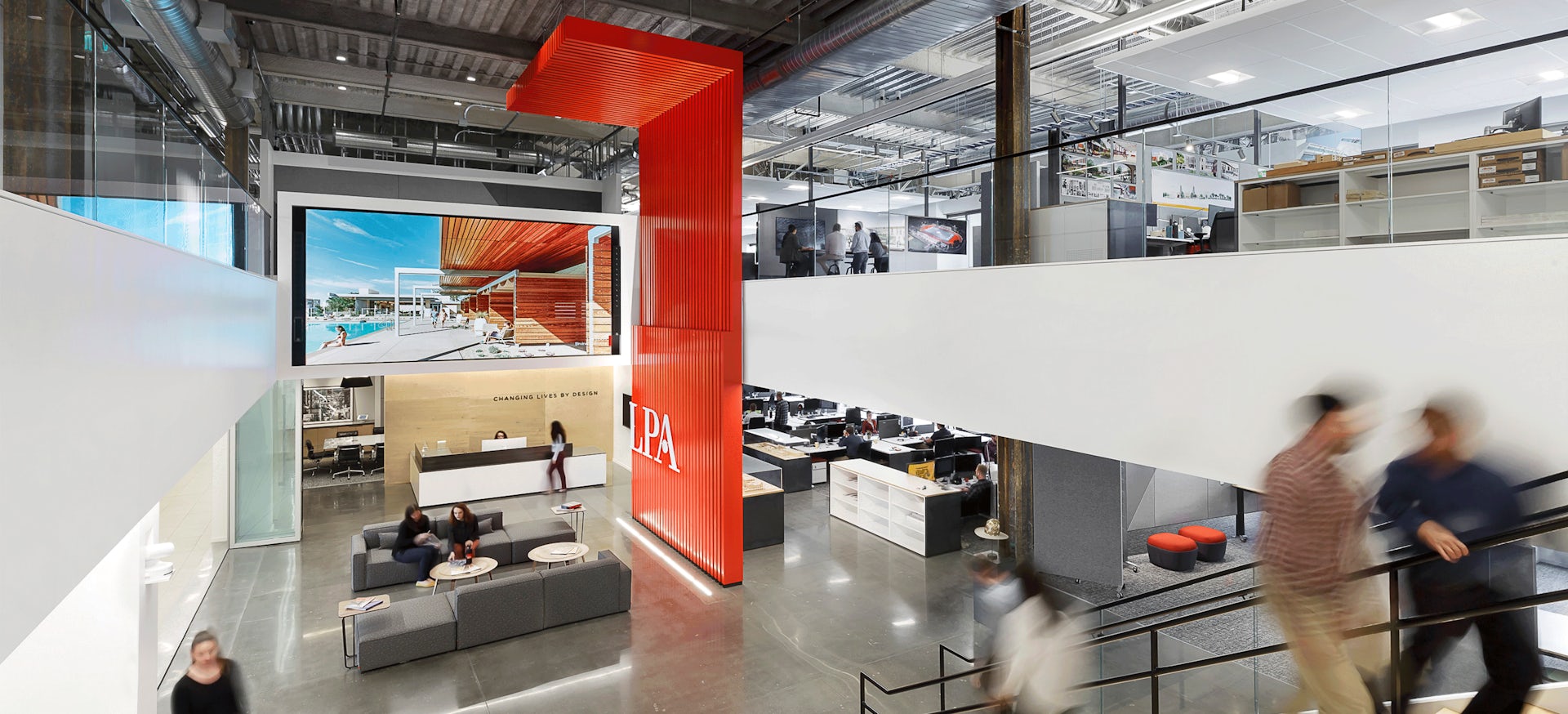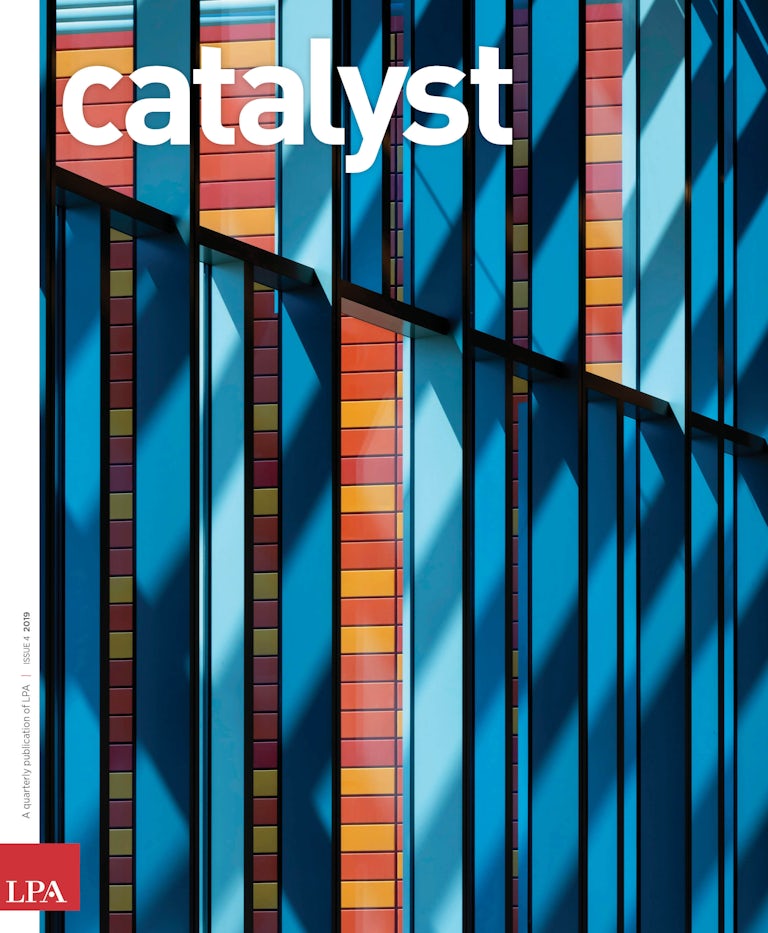The American Institute of Architects (AIA) recently released the survey results for firms participating in the AIA 2030 Commitment, quantifying how we performed in our efforts to reduce energy use in our projects. Of the 252 architecture firms participating in the program, only 16, including LPA, achieved the benchmark standard of a 70 percent reduction in 2018, according to the AIA data. LPA was an early supporter of the 2030 Commitment, and surpassing the 70 percent standard was a core goal for us. We work hard as an integrated firm to design projects that are efficient for our clients, and the 2030 Commitment provides an important benchmark. We also backed the challenge, which calls for a 100 percent reduction in fossil fuel use in buildings by 2030, because it addresses what really matters—how a building performs.
The fact that we were able to achieve the results over such a large scale of projects—covering different sectors, sizes and uses—illustrates that institutionalizing sustainability at large firms can make a difference. We were the biggest firm to achieve the standard, with more than 5 million square feet of buildings and interiors completed in the year. These weren’t display buildings with special budgets; we were able to cut energy use by more than 70 percent in everyday projects with standard budgets, including schools and office buildings, by making energy efficiency one of the foundations of what we do.
We talk a lot about the value of integrated design and our better process and the survey provides evidence that shows how we are performing compared to the industry standards. The national average for firms participating in the 2030 Commitment in 2018 was a 46 percent reduction, up from 44 percent in 2017. That’s progress, but it is still a clear indicator of the difficulty of the challenge.
2030 Challenge: Better Process, Better Results
LPA is one of only 16 architecture firms in the United States to reach AIA’s 2030 Commitment standard for 2018

Energy efficiency and building performance are at the core of everything we do. We have practiced for 30 years with the knowledge that saving energy is one of the essential aspects of design. Early in our history we decided meeting code was not good enough. That is why in 2004 we set a goal that LPA projects would be 25 percent better than Title 24 California’s energy code. It was a decision based on recognition that energy efficiency and the reduction of fossil fuels in the built environment should be a priority.
As we grew as an integrated firm, sustainability was one of the reasons we added engineers. Today, LPA’s team includes designers with expertise in stormwater management, HVAC systems, renewable energy, electrical and landscape. We knew we would have to take a more holistic approach to achieve significant sustainability goals. The expertise to create more efficient buildings needed to be baked into everything we did, from the start of the process. When the 2030 Challenge was launched in 2002, it was a natural fit for us. We signed up in 2006 and started reporting results in 2007. As a firm we recognized that any substantive effort on sustainability needed to focus on reducing the use of fossil fuels.
As we started to incorporate the challenge into our work, we learned more about the obstacles to meet the challenge and what is necessary to achieve better results. Our approach to energy efficiency always starts with a strong focus on users and passive techniques, such as proper siting and orientation, which make buildings perform fundamentally better and cut our clients’ operating costs. We launched LPAred, our own research studio, in part to focus on post-occupancy evaluations to generate hard data on what was working and what was not.
There are many ways to measure the results. In the past five years LPA has won 80 AIA awards from national, state and chapter components and 48 integration awards from engineering, landscape and lighting associations, in recognition of efforts to achieve design excellence. We can point to our consistent level of repeat or referral business—more than 80 percent of our work stems from existing clients. And we could talk about user satisfaction, healthy environments and buildings that work for their users.
You could argue that these are somewhat subjective proofs. But energy efficiency is not subjective. You can put a number to it. That’s why we have added a graphic on all our project descriptions, illustrating the energy performance, for all to see. The numbers are the numbers. The 2030 data provide an unbiased, objective report card for us as architects and create real goals for the industry. Next year the standard is set to rise to an 80 percent average reduction, and we know we will have to work harder with our clients to find new ideas and new concepts to make sure we are continuing to design facilities that will stand the test of time. Dan Heinfeld is President of LPA and the recipient of the 2018 President’s Award from the AIA Orange County chapter in recognition of his leadership in sustainability.
This story originally appeared in Catalyst Issue 4 2019. Subscribe today to receive Catalyst, a quarterly publication that takes a deep dive into design ideas, industry leaders and initiatives.















